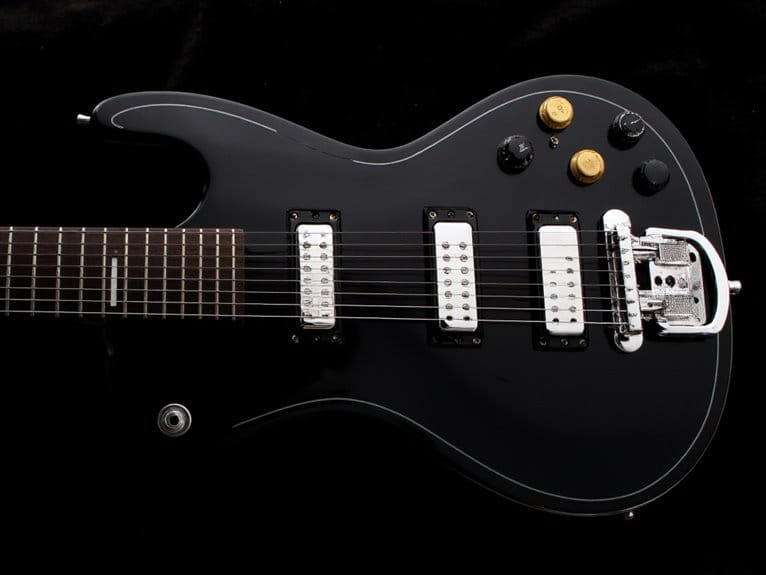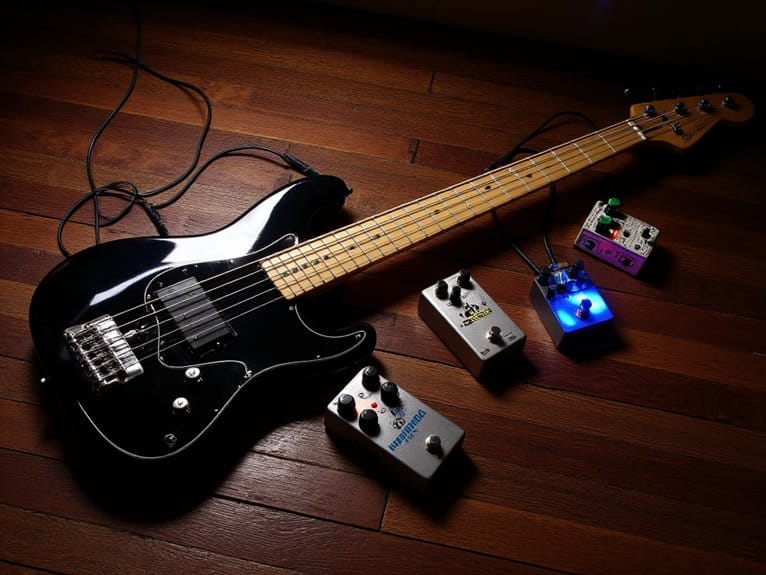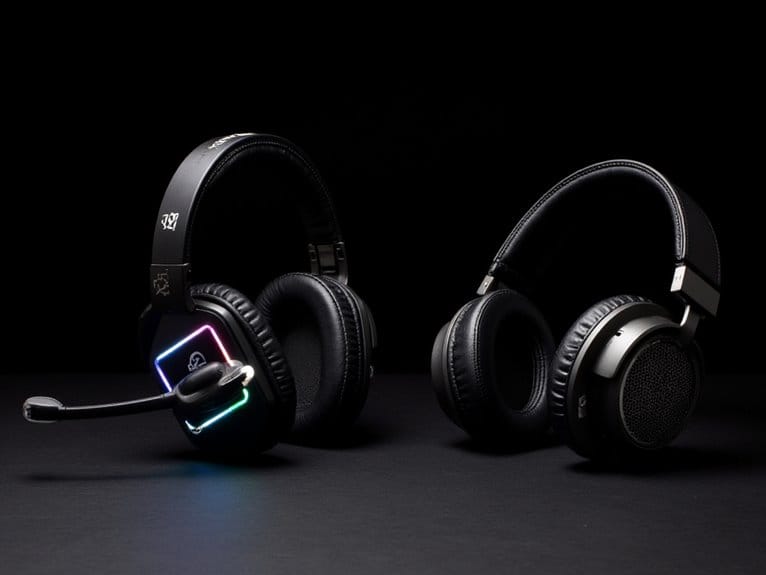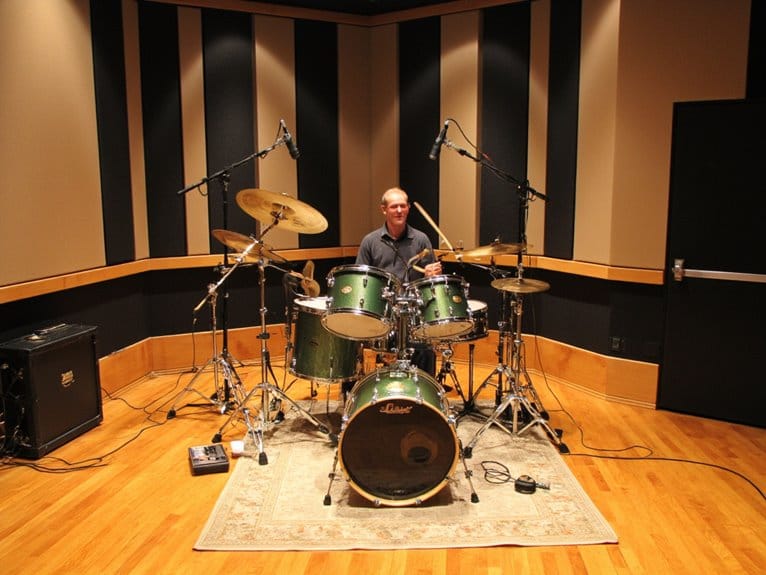Historical Overview of Guitar Effects Evolution
Guitar effects evolved from primitive 1920s amplification experiments to today’s sophisticated digital processors, fundamentally transforming musical expression. You’ll find early innovations focused on volume needs against big bands, while the 1950s-60s brought iconic amps like Fender’s Twin Reverb and Marshall’s JTM45. The 1970s-80s golden age introduced legendary stompboxes like the MXR Phase 90, before digital revolution changed everything with multi-effects units that now blend analog warmth with digital precision for unprecedented sonic possibilities.
We are supported by our audience. When you purchase through links on our site, we may earn an affiliate commission, at no extra cost for you. Learn more.
Notable Insights
- Early electric guitars emerged in the 1920s-1940s to compete with big band volumes, sparking initial sound experimentation.
- The 1950s-1960s saw amplifier integration with iconic models like Fender’s Twin Reverb and Marshall’s JTM45 shaping guitar tone.
- Analog stompbox revolution in the 1970s-1980s produced legendary pedals like MXR Phase 90 and Big Muff Pi.
- Digital multi-effects units from companies like Line 6 and Zoom transformed live performance with programmable presets.
- Modern hybrid systems combine analog warmth with digital precision, featuring compact units and software integration capabilities.
Early Electric Guitar Development and Sound Experimentation (1920s-1940s)
While most people think electric guitars burst onto the scene in the 1950s, I’ve discovered that the real story begins decades earlier, when inventors and musicians were already wrestling with a fundamental problem: acoustic guitars simply couldn’t compete with the volume of brass sections and drums in increasingly popular big band ensembles.
The earliest electric guitar innovations emerged from this practical need, with pioneers like George Breed securing patents as early as 1890, though his designs were admittedly primitive. These early electric instruments would eventually require specialized audio interfaces to properly capture and process their signals for recording purposes, establishing a foundation for the professional recording equipment we rely on today.
As musicians began experimenting with these new electric instruments, they discovered that the amplified sound opened up entirely new possibilities for sound experimentation, leading to creative techniques that would later evolve into the effects processing we know today.
Rise of Amplifier Integration and First Standalone Effects (1950s-1960s)
As the 1950s unfolded, I found myself fascinated by how the guitar world was undergoing a complete transformation, moving beyond simple amplification into something far more sophisticated and tonally complex. Leo Fender’s Bassman and Twin Reverb established industry benchmarks through their integrated preamp and power amp stages, while Jim Marshall’s JTM45 borrowed these circuits but added European EL34 tubes for that aggressive British bite. This amplifier integration represented a significant shift from basic sound reproduction to active tone shaping.
| Innovation | Impact |
|---|---|
| Fender Bassman Design | Industry standard preamp/power integration |
| Marshall JTM45 | British sound through European components |
| Guild Double-Twin | Advanced speaker configurations |
| Onboard Distortion Controls | Reduced external effects dependence |
| Solid-State Technology | Greater reliability, cost advantages |
Meanwhile, distortion experimentation flourished as Dave Davies damaged speaker cones and linked amplifier outputs creatively, pioneering the gritty textures that would define rock music’s sonic landscape.
Golden Age of Effects Pedals and Analog Innovation (1970s-1980s)
The stompbox revolution that erupted in the 1970s transformed my understanding of what a guitar could actually become, as companies like MXR, Boss, Ibanez, and Electro-Harmonix released a torrent of analog innovations that would define rock’s sonic vocabulary for decades.
This era’s pedal craftsmanship reached unprecedented heights through bucket brigade devices and integrated circuits, enabling everything from the MXR Phase 90‘s swooshing textures to the Big Muff Pi’s saturated sustain that Hendrix and Gilmour wielded so effectively.
Circuit innovation flourished as manufacturers competed fiercely, developing specialized overdrive, chorus, and flanger effects that expanded musical diversity across rock, funk, and blues.
These analog designs offered superior expression techniques, responding dynamically to playing nuances in ways that would inspire countless guitarists to explore new sonic territories.
Digital Revolution and Multi-Effects Technology (1980s-Present)
When the 1980s ushered in digital effects technology, I witnessed a seismic shift that fundamentally altered how guitarists approached sound creation, trading the warm imperfections of analog circuits for unprecedented precision and programmable flexibility.
Companies like Line 6 and Zoom pioneered compact multi-effects units that democratized sound design, enabling both beginners and professionals to experiment with complex effects chains previously requiring expensive, bulky pedalboards.
Though analog purists criticized early digital effects for lacking organic warmth, advancing DSP algorithms gradually closed this gap, delivering sophisticated emulations of vintage sounds while offering MIDI integration and real-time parameter control that analog circuits simply couldn’t match.
While early digital effects faced criticism for sterile sound quality, evolving DSP technology eventually delivered the warmth and authenticity that skeptical musicians demanded.
- Digital effects revolutionized live performance through programmable presets and instant effect switching
- Multi-effects processors consolidated entire pedalboards into single, portable units with enhanced reliability
- Advanced DSP technology bridged the analog-digital divide with increasingly authentic vintage emulations
Modern Hybrid Systems and Future Developments
Building on digital technology’s foundation, I’ve watched today’s guitar effects landscape evolve into sophisticated hybrid ecosystems that marry analog warmth with digital precision, creating systems that would’ve seen like science fiction just two decades ago.
You’ll find hybrid technologies combining tube amps with Fractal Audio processors, delivering studio-quality reamping and silent stage capabilities that touring musicians demand. These compact units, like the Boss GT-1000 CORE and Line 6 HX Stomp, now represent 35% of the effects market, offering full rig replacements in pedalboard-friendly formats.
Software integration connects your pedals directly to DAWs, enabling real-time parameter control and cloud-based preset sharing. Looking ahead, future trends point toward sustainable manufacturing practices, enhanced app connectivity, and continued miniaturization without compromising processing power.
On a final note
You’ve witnessed nearly a century of guitar effects evolution, from primitive tube amp experiments to today’s sophisticated digital processors, and you’re living through the most exciting era yet. Whether you’re drawn to vintage analog warmth or cutting-edge modeling technology, you’ll find countless tools to shape your sound, though I’d argue the best approach combines both worlds for maximum creative flexibility.







